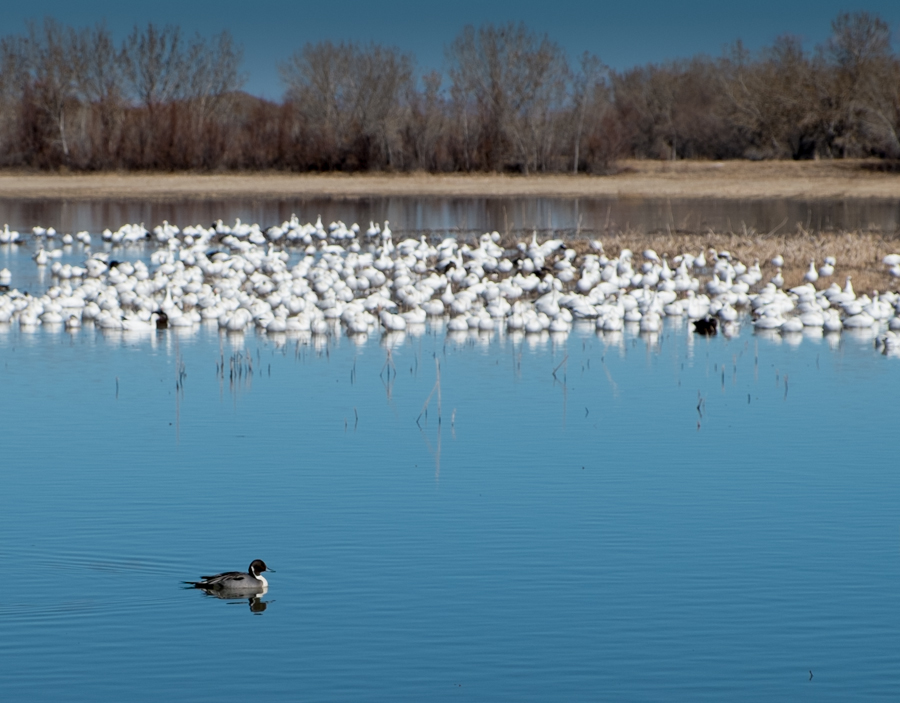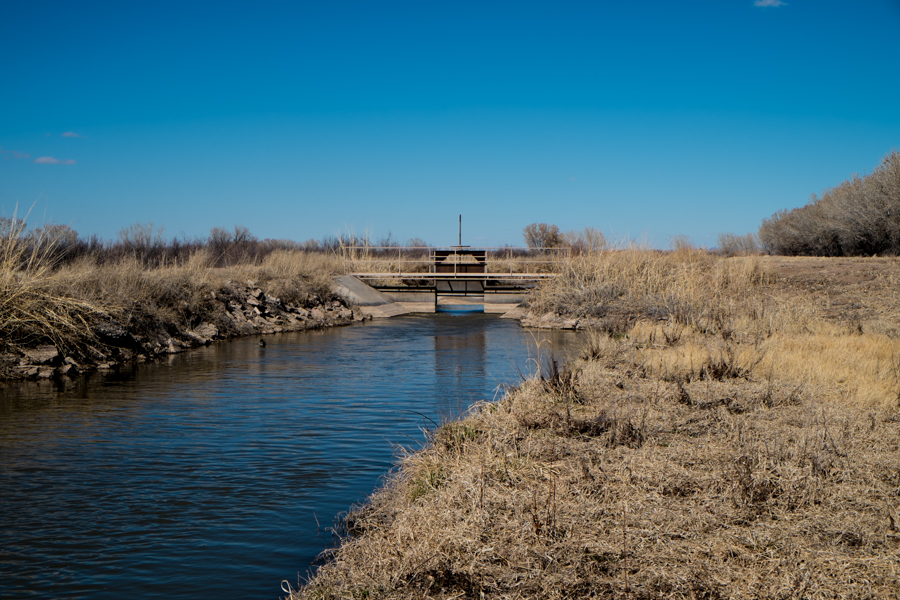Lunch today sitting in the car at the Bosque del Apache National Wildlife Refuge, with a pond of snow geese, pintails and assorted other water fowl wintering here in one of the few broad wet spots in the Middle Rio Grande Valley of central New Mexico. A birder friend explained once that the car makes a great bird blind, because they’re used to cars driving by on the dirt roads that thread the refuge.
A couple of weeks ago, in response to my last road trip picture blog, Chris Brooks asked where the water’s coming from – whether it’s groundwater or surface water. My answer was that it’s sorta both. This is one of those places where the groundwater-surface water connection means it’s all coming from the same place. There is a network of drains (ditches) dug to intercept the shallow water table, which is quite closely connected to the river. The drains were used to lower the water table in the swampy areas and reclaim the land for farming. This was done, I think, in the 1930s. Then a large main drain was dug in the 1950s. Those drains are used as the source of supply to the refuge. So it’s surface water, because it’s flowing in drains on the surface, but the drains are drawing from the shallow aquifer, so it’s groundwater, but ultimately that aquifer is tightly coupled with the river, so it’s sorta surface water in the end. Here’s some of the plumbing:



I guess it’s a good thing that there actually is shallow groundwater in that area to supply the Wildlife Refuge in a year with very limited surface flows. Clearly a benefit of having a unified (surface and groundwater) system of water rights. Arizona is grappling with the consequences of our bifurcated system along the San Pedro River in the southeast portion of the state. That shallow groundwater is vitally important to maintain baseflow in desert rivers during drought years – and to maintain wildlife habitat.